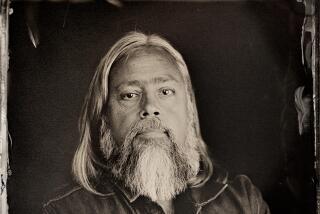Scott Berg’s ’38 Nooses’ resonates in Civil War backdrop
38 Nooses
Lincoln, Little Crow, and the Beginning of the Frontier’s End
Scott W. Berg
Pantheon: 384 pp., $27.95
In summer 1862, as President Abraham Lincoln waged war to keep 11 Southern slave-holding states from seceding from the Union, four young Dakota Indians approached a farmhouse in what is now central Minnesota looking for food after a failed hunting expedition. Drunk, they quickly compounded a series of bad decisions and shot dead the farmer, two other men, a woman and a 15-year-old girl, all white.
The killings weren’t all that unusual for that time and place. But that moment of drunken score-settling would resonate across the territory and lead to yet another war.
While the recent “Lincoln” movie has pulled the American Civil War into one of its periodic moments in the contemporary spotlight, historian Scott W. Berg reminds us in his splendid new book, “38 Nooses: Lincoln, Little Crow, and the Beginning of the Frontier’s End,” that the Civil War was only part of the nation’s crises in that era.
The killings that day along the American frontier terrorized whites in the region. But it also paradoxically served as a rallying point for the disparate branches of the Mdewakanton Dakota tribe, who converged on the tepee of leader Little Crow to report on what the four men had done and to air a long list of grievances against the expanding United States, from violence to fraud to broken treaties.
Pushed to the brink of tolerance, the Dakota wanted war. Little Crow warned the council of rebels that the murders of the white woman and girl “would bring speedy and indiscriminate retribution down on all of the Dakota, an onslaught they wouldn’t be able to withstand.”
Little Crow decided to lead them into battle anyway, with devastating consequences.
Hundreds of people died that August, most of them white settlers. Vast areas of white-settled territory emptied, including complete villages, a result of very real and savage attacks and a panic-fueled rumor mill that granted the marauding tribesmen more numbers and organization than they had.
In the end, the Union Army made quick work of the rebellion. But there the events, and Berg’s story, veer from frontier confrontation to legal lynching.
Little Crow and a band of about 100 warriors escaped into the Plains, but some 1,500 Dakota men, women and children were either captured or turned themselves in. A hastily convened military tribunal lasting only six weeks found 303 warriors guilty of murder and sentenced them all to hang, based on sketchy evidence and a broad definition of culpability (warriors firing weapons in a military encounter were condemned as murderers with no evidence they hit a target, military or civilian), plus a firm belief by the whites that the region should be cleansed of its native inhabitants.
Because the sentences were from a military tribunal and not a civilian court, the president had to sign off on them. Lincoln appointed two men to review the verdicts and whittled the execution list to 39 warriors whom he believed had massacred whites. One was later reprieved, bringing the final list to 38.
And on the morning after Christmas 1862, in a public display of revenge, all 38 men were hanged in one single drop from a massive four-sided gallows erected in Mankato, about 85 miles southwest of St. Paul.
It was, Berg reports, the largest legally sanctioned execution in American history, a staggering event whose significance has been overshadowed by the Civil War even as it stands as a telling moment in America’s westward expansion.
Berg does a remarkable job with the story and its aftermath, drawing on memoirs, contemporary reports and presidential papers to re-create — and offer an easy road map through — a complicated narrative. He lets the morality of individual acts and actors stand and fall on their own merits, though it’s clear he believes that many of the condemned Dakota were railroaded.
And even those who were guilty of crimes could well point to significant mitigating circumstances. The uprising was the act of desperate men fighting for their lives, their people and their cultural identity against a much stronger and, in many ways, less moral conqueror. Framed at the time — notably by white writers — as a battle between the civilized and primitive worlds, it was in truth the violent subjugation of a people in possession of land desired by a more powerful neighbor.
And in a poignant moment of irony, Little Crow himself was gunned down seven months later (the same day the Battle of Gettysburg ended) by a farmer and his son as he and his own teenage son, now traveling alone, foraged in a raspberry patch. The farmers didn’t know who they were killing; they were just murdering an Indian to be scalped for a $25 bounty.
Berg wisely doesn’t try to turn what happened during summer and winter 1862 into a morality tale. But the implications are clear. As are the lessons, for those who want to learn. Rebellion invariably is a response, and a nation that fails to understand the pressures that give rise to it is bound to suffer the repeated results.
Martelle is the author, most recently, of “Detroit: A Biography.”
More to Read
Sign up for our Book Club newsletter
Get the latest news, events and more from the Los Angeles Times Book Club, and help us get L.A. reading and talking.
You may occasionally receive promotional content from the Los Angeles Times.








